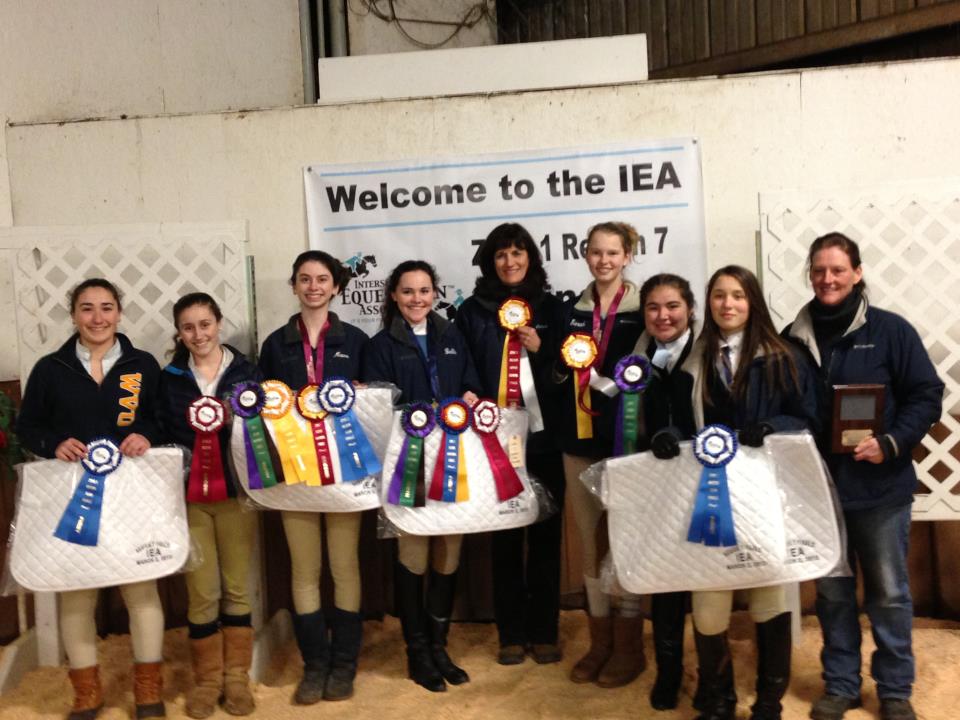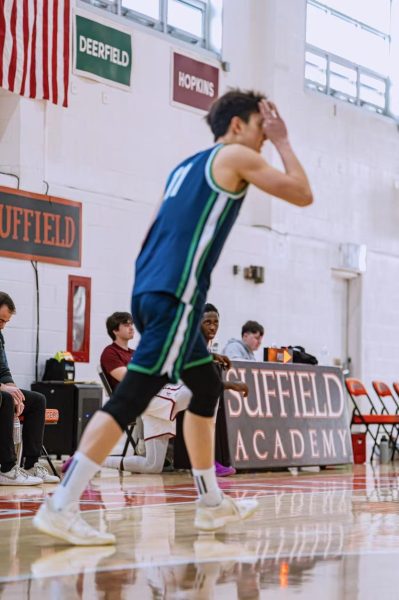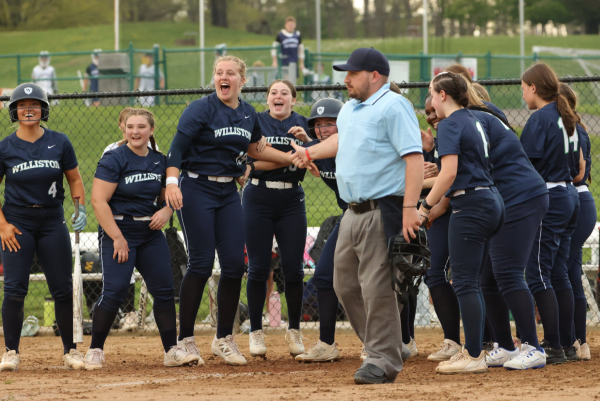Varsity Equestrian
On Sunday September 29th the Williston-Fuller IEA team arrived at Heritage Farm in Easthampton at 6:15 in the morning to co-host the first show of a long season. The temperature outside was a chill 40 degrees and the sun had not risen above the horizon. The riders left the warmth of their cars and set up camp on the wooden bleachers outside the show ring. Blankets were laid down and folding chairs placed right next to the fence. The show didn’t start until exactly 9am when the judge arrived. Days at horse shows are long, and consist of a lot of sitting around and waiting for your turn in the ring. This one was no exception. Having six teams with at least ten riders creates a lot of activity but when a riders fifteen minutes in the show ring are over the rest of the day is spent hanging out and waiting for the show to be over to see how your team did.
Did you know that Williston has a competitive riding team? Most of you probably don’t. It’s a group of four girls from Williston and six girls from surrounding towns like Easthampton and Northampton that competes against other teams in New England, and Williston has three girls earning varsity letters this year. They compete in five regular shows in the fall, and if individuals, or the team as a whole, earn enough points to move on to regionals and then zones then the season can go well into January.
But before we get any farther into this let’s clear up a few popular misconceptions. No, we don’t race. The rider does not just sit around while the horse does all the work. The horse will not understand if a rider shakes the reins and tell it to go, that means nothing to them. Everything is a lot more complicated and detailed than it seems and the riders put a lot of time and effort into being prepared for these shows.
Most horse shows outside the IEA riders are required to bring your own horse. With IEA riders use the horses at the host barn that no one from other barns has probably ever ridden before. This adds an added level of difficulty to the competition. Riders are expected to perform at their best and ride better than they do at home on a horse that they have never met before. For jumping classes riders get a two jump warm up right before they go in the ring, but for flat classes, where you are told to do different gaits and have perfect equitation, there is no warm up. The first time that a rider rides this horse is in the show ring where they are being judged. When asked what the hardest part of IEA shows was senior Co-Captain Alyssa Cote said “It’s not knowing what your horse is going to be like until you get on or what it is going to do”.
Classes are split into five different levels based on ability. The most challenging horses to ride get warmed up first. The hardest classes begin first thing in the morning and proceed on from most advanced to least advanced. Each rider can only be in two classes, jumping and flat, but both are judged on equitation, which is how well you ride and how perfect your body position is. There is usually only one judge at a show and different judges like certain things more. One judge could be really particular about how far the rider’s heels are down while another is more concerned about the position of the rider’s hands. Unlike sports like soccer or hockey where a goal is a goal there is a lot more room for interpretation and personal opinion in horseback riding.
Riders in the IEA compete for points individually and as a team, but in each class, split by ability, only one rider can be chosen as point rider by their coach. This rider’s points count towards the teams total for the show, and while everyone can earn individual points in the hopes of moving on to regionals and zones having your point rider for the day do well is very important for the team as a whole to place highly and earn points towards moving on to the next level.
The Williston-Fuller team had no one riding in the first class of the day, but after that almost every class had one of our riders in it. Watching teammates ride and do well is one of the perks at being at these shows all day. The morning ran a little slow, jumps were being put up and down and taken away after almost every class then being put back after that class was over. After the lunch break the action started to pick up. Five girls on the team competed in the same class, which was the largest at the show, and so big it had to be split into three groups consisting of six or seven riders in each section.
Jumping and flat classes can have up to eleven riders in each but once it hits twelve riders the class is split because of the size of the rings and number of horses available. Having even eight girls in a flat class seems crowded, finding a space to fit in on the rail is harder and controlling the horse’s tempo becomes even more crucial, a rider has to be even more alert of others around them and then be sure that their position is as perfect as possible. If a rider breaks from a trot to walk or canter to trot you could potentially not place at all. A flat class with eleven girls is significantly more challenging than a class with six girls. In IEA shows ribbons are given out to the first through sixth place riders, and if the classes are split it can be a huge advantage to a team because they have a better chance of gaining some points.
Overall the team was very successful, out of the six schools competing they earned reserve champion coming in second to Mount Holyoke’s high school team. Highlights of the day included Sarah Etzel earning a first place ribbon in the most difficult flat class of the day, and seniors Rachel Lloyd and Olivia Foderaro riding the same horse on the flat and both earning second place ribbons.
Well now you know a little bit more about what equestrian really is and how competitive and difficult it can be. The whole purpose of horseback riding is to make it look easy and if it looks easy then the rider is probably doing a fantastic job.








